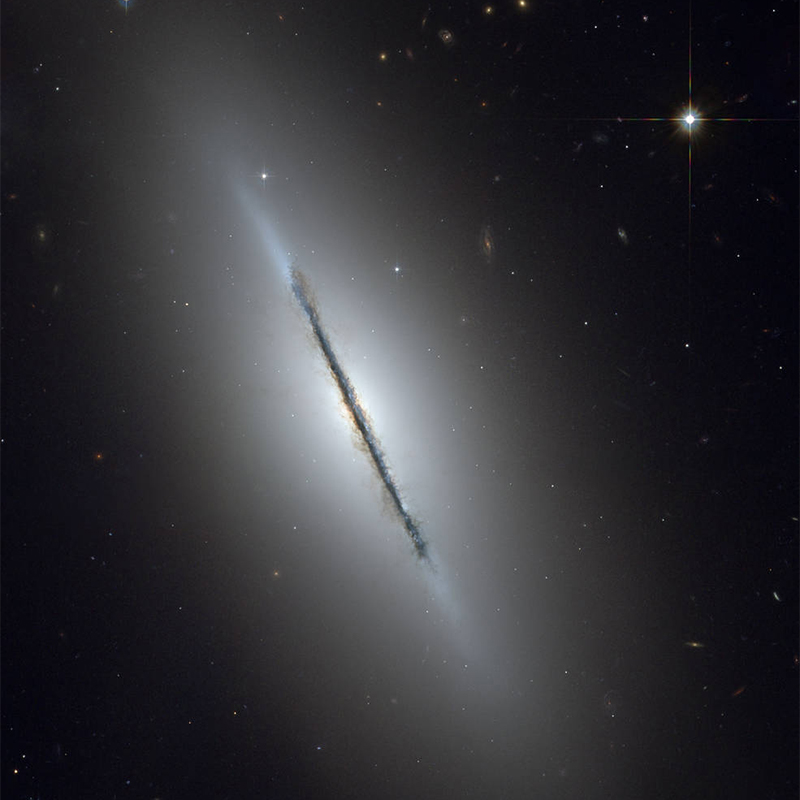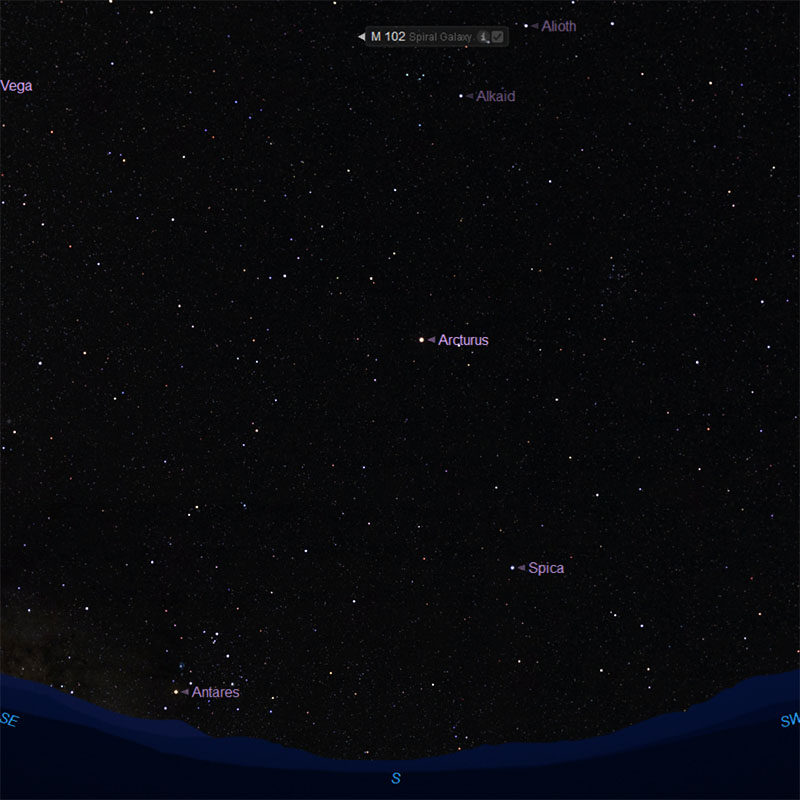M102 - The Spindle Galaxy

Credits: Keith Turnecliff, Long Itchington
Pierre Méchain, a French astronomer and colleague of Charles Messier, discovered the Spindle galaxy in 1781 — the same year that he discovered the first two of his eight comets. M102 is located 44 million light-years from Earth in the constellation Draco and has an apparent magnitude of 10.7.
Facts about M102 by Keith Turnecliff
It can be observed using a small telescope and is most easily spotted during July.

Best Viewed with resolution 1980 x 1020.
Credits: Image courtesy of Starry Night Pro Plus 8, researched and implemented by Keith Turnecliff.